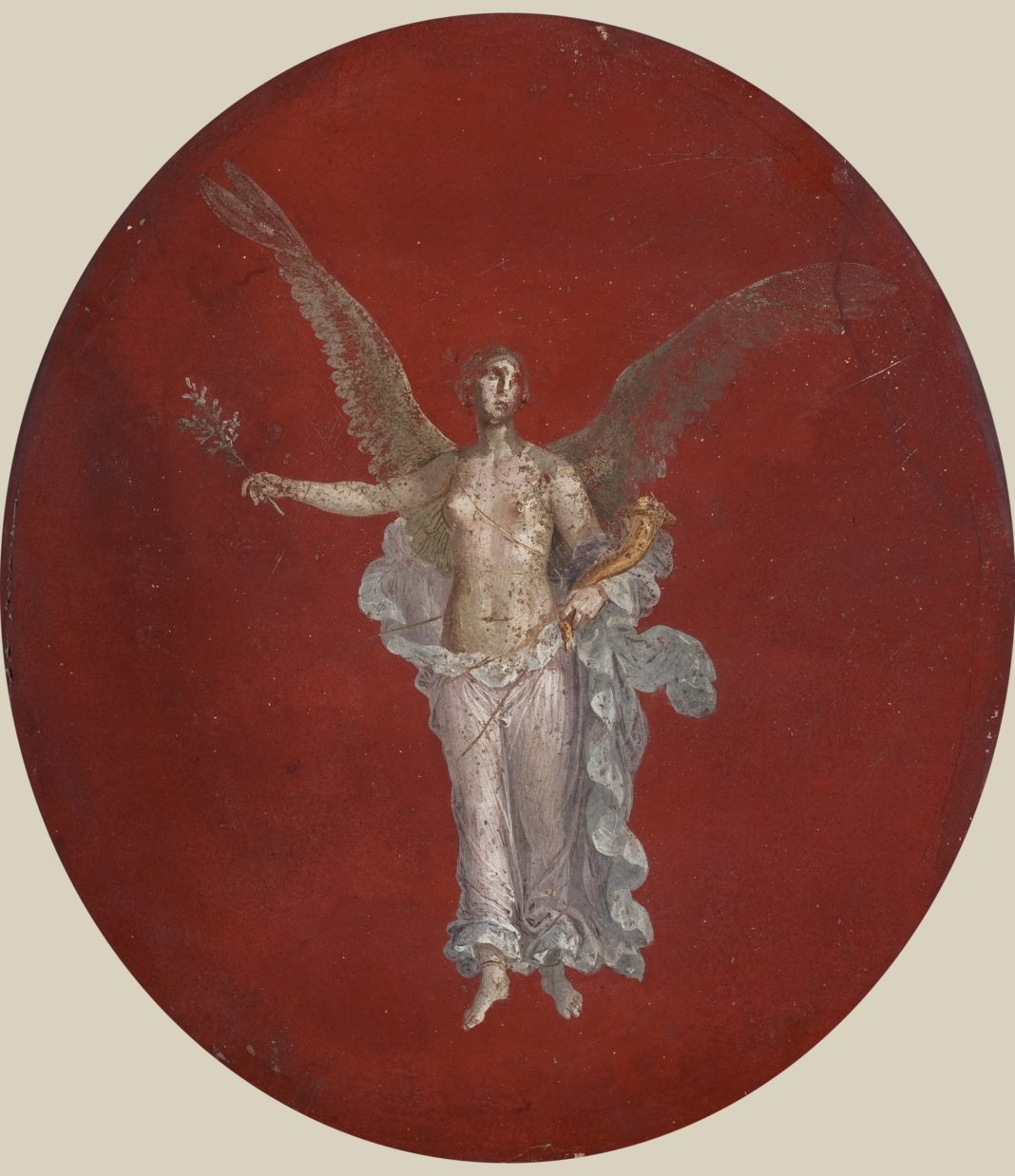La Vittoria alata, affresco pompeiano (foto) del Museo archeologico nazionale di Napoli, simbolo di pace e prosperità, si trasferisce alla Corte di giustizia dell’Unione europea in Lussemburgo per 18 mesi. E’ la quarta opera del Mann, unico prestatore italiano all’Istituzione che espone capolavori da tutto il continente, a essere ‘ambasciatrice’ del nostro paese.
Il dialogo tra l’arte antica e le radici del diritto era partito nel 2017, per iniziativa del direttore Paolo Giulierini, nell’ambito del progetto “OBVIA – out of boundaries viral art dissemination“, per la promozione internazionale del Mann in rete con l’Università degli Studi di Napoli “Federico II”.
Prima opera italiana in assoluto del Mann ad arrivare in Lussemburgo era stata l’Erma di Socrate; successivamente si erano avvicendate la testa dallo pseudo Seneca e la Doppia Erma di Erodoto/Tucidide. La scelta questa volta è caduta su un affresco pompeiano (inv. 8940, dimensioni cm 65 x 55), datato al 45-79 d.C.
La cerimonia si terrà alle ore 18, al secondo piano del Palazzo della Corte di Giustizia, nella ‘salle des pas perdus.
L’opera rappresenta una figura femminile che ha un ramoscello di palma nella mano destra e una cornucopia, simbolo dell’abbondanza, in quella sinistra.
Court of Justice/ Peace symbol, The winged Victory, flies to Luxembourg. A loan for 18 months from the Mann
The winged Victory, a Pompeian fresco at the National Archaeological Museum in Naples, a symbol of peace and prosperity, is moving to the Court of Justice of the European Union in Luxembourg for 18 months. It is the fourth work from the Mann, the only Italian lender to the institution that exhibits masterpieces from across the continent, to be an ‘ambassador’ for our country.
The dialogue between ancient art and the roots of law started in 2017, on the initiative of director Paolo Giulierini, as part of the project “OBVIA – out of boundaries viral art dissemination,” for the international promotion of the Mann in a network with the University of Naples “Federico II.”
The first ever Italian work from the Mann to arrive in Luxembourg had been the Hermes of Socrates; subsequently the head from the pseudo-Seneca and the Double Hermes of Herodotus/Tucydides had followed. The choice this time fell on a Pompeian fresco (inv. 8940, size 65 x 55 cm), dated 45-79 AD.
The ceremony will be held at 6 p.m. on the second floor of the Palace of the Court of Justice, in the ‘salle des pas perdus.
The work depicts a female figure holding a palm twig in her right hand and a cornucopia, a symbol of abundance, in her left.










